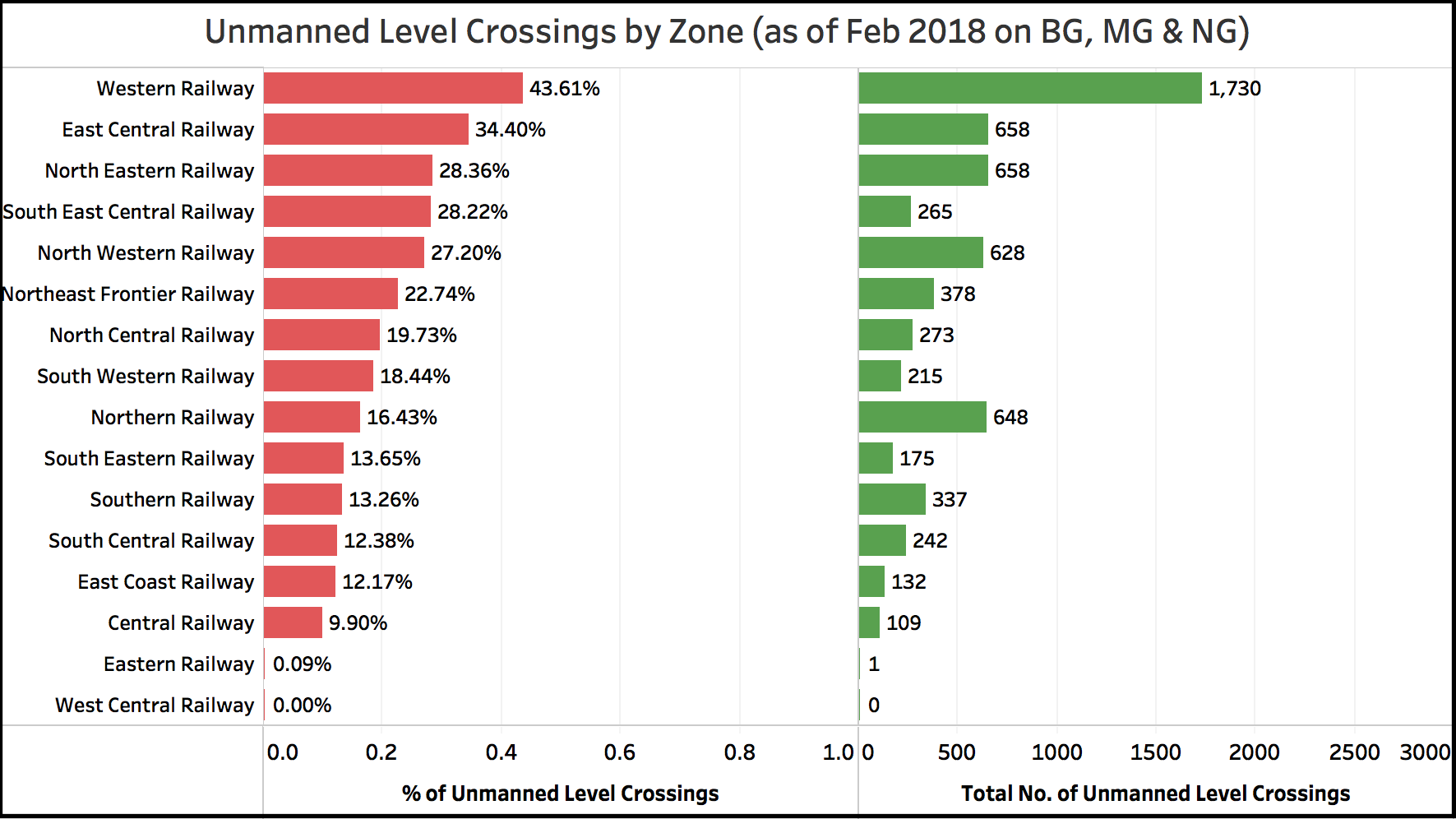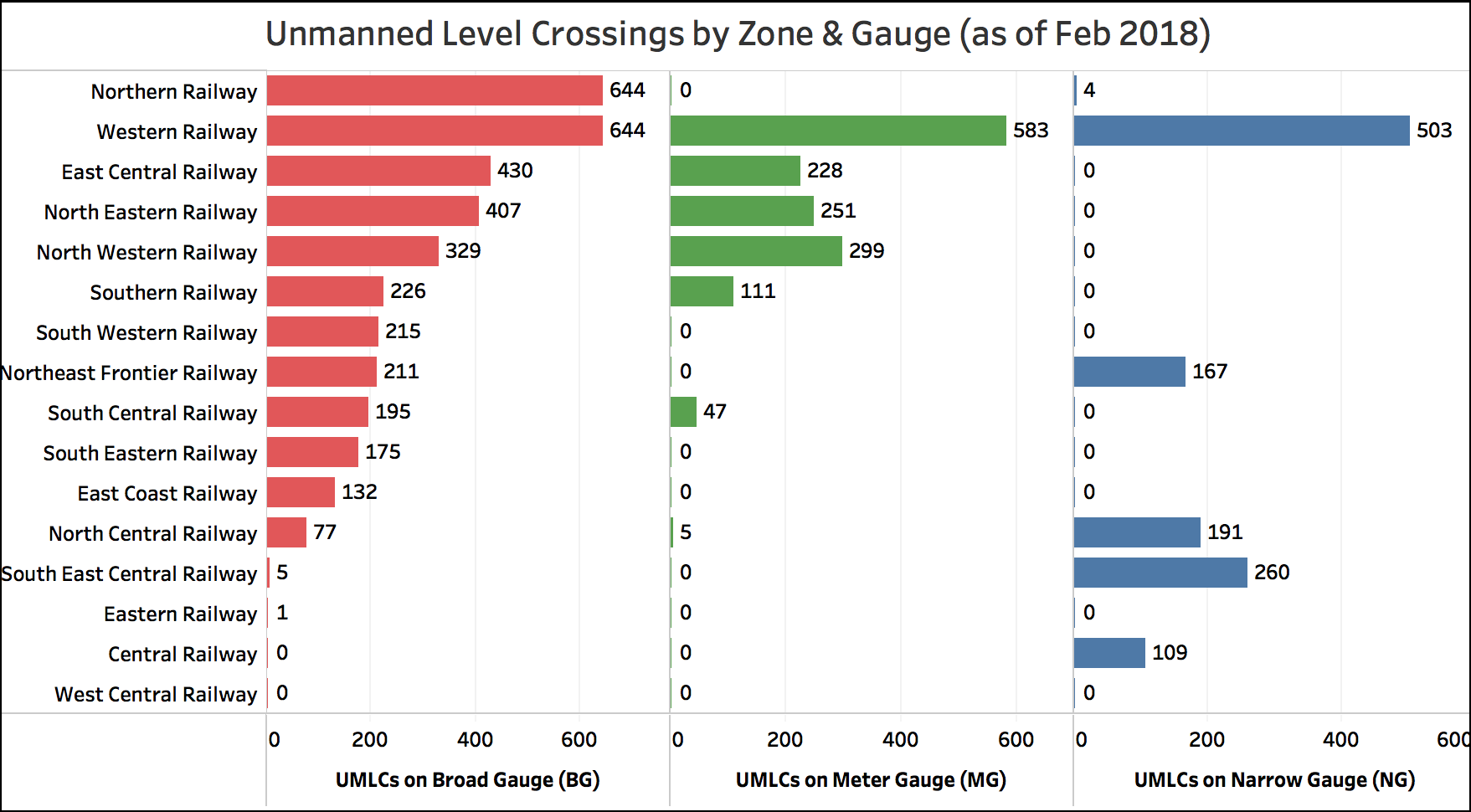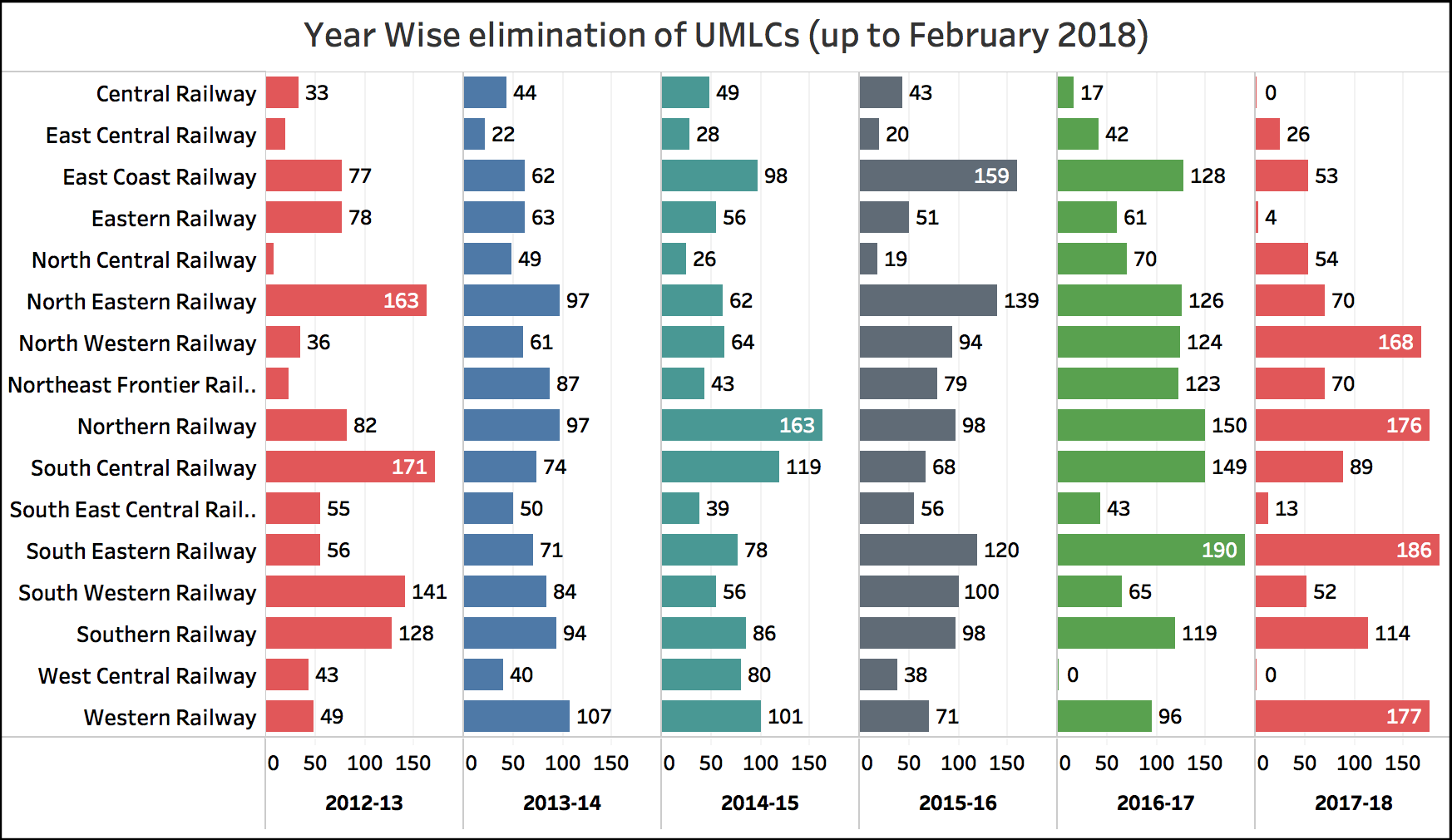[orc]As per the data shared by the Government in the Parliament, more than 3000 level crossings are unmanned (UMLC) across the country on Broad Gauge (BG) while more than 2700 are unmanned on Meter Gauge (MG) & Narrow Gauge (NG). As per the plan submitted by the government to the Supreme Court, all UMLCs on BG are to be eliminated by 2020.
More than 13 school children lost their lives in an accident at an unmanned level crossing (UMLC) in Kushinagar of Uttar Pradesh. In a similar accident in Telangana in 2014, 26 children lost their lives. A PIL was filed in the Supreme Court (SC) following the accident in 2014. The case went on for about one and a half years and the SC disposed it in 2016 after having convinced itself with the action plan submitted by the government. The government had submitted an affidavit to the court in September 2015 with an action plan to eliminate all UMLCs on BG by 2020. As it stands, more than 3000 level crossings are still unmanned on the broad gauge network as of February 2018.
22% of the Level Crossings are still Unmanned
Out of the 29487 level crossings across India, 6449 or 22% are still unmanned as of February 2018. Out of the 6449, 3691 are on Broad Gauge, 1524 on Meter Gauge and 1234 on Narrow Gauge. Amongst the zones, 44% of the level crossings are still unmanned in Western Railways. Western Railways also has the highest number of UMLCs at 1730. More than 30% of the level crossings are unmanned in two different zones and more than 20% in 6 zones. Only the West Central Railway & Eastern Railway zones have eliminated virtually every UMLC. Central Railway zone & South East Central Railway zone also eliminated almost all UMLCs on the BG. The UMLCs in Central Railway zone are all on the narrow gauge.
 About 4 zones have completely eliminated the UMLCs on Broad Gauge, while the western & northern railway have more than 600 UMLCs each on BG. More than 200 level crossings each on BG are unmanned in 8 zones more than 100 on BG are unmanned in 11 zones.
About 4 zones have completely eliminated the UMLCs on Broad Gauge, while the western & northern railway have more than 600 UMLCs each on BG. More than 200 level crossings each on BG are unmanned in 8 zones more than 100 on BG are unmanned in 11 zones.
 More than 7000 UMLCs eliminated since 2012-13
More than 7000 UMLCs eliminated since 2012-13
In the last 6 years, a total of 7421 UMLCs have been eliminated. Of these six years, the highest number of UMLCs i.e., 1503 have been eliminated in 2016-17. On average, about 1250 UMLCs have been eliminated each year starting 2012-13. More than 500 UMLCs each have been eliminated in these six years in 8 zones. Four zones namely, Eastern Railway, Central Railway, West Central & South East Central have eliminated almost all UMLCs on broad gauge.
 209 accidents at UMLCs in 6 years
209 accidents at UMLCs in 6 years
A total of 209 accidents took place at UMLCs between 2012-13 and 2017-18 (till February 2018). The number of such accidents has come down from 53 in 2012-13 to 20 in 2016-17. Zones that have a greater percentage of UMLCs are also in the top with most accidents at UMLCs.
Target to eliminate UMLCs on Broad Gauge by 2020
The Ministry of Railways told a parliamentary standing committee as well as the Supreme Court that the following methods will be used to eliminate the UMLCs
- Closure – Closing UMLCs having NIL/negligible traffic volume
- Merger – Merger of UMLCs to nearby LCs/grade-separators by Construction of diversion road.
- Provision of Subways/RUBs
- Manning – UMLCs which cannot be eliminated by above methods will be progressively manned
Further, the government told the parliamentary standing committee as well the SC that all UMLCs on broad gauge will be eliminated by 2020. As per the plan submitted by the government, 1500 UMLCs each will be eliminated in 2017-18 and 2018-19 while the remaining will be eliminated in 2019-20.The government also told the standing committee that UMLCs on meter gauge & narrow gauge network will be gradually removed during gauge conversion work.
While the government seems to be on target to eliminate all UMLCs on broad gauge by 2020, the work should be expedited to prevent any further accidents.
Featured Image: Unmanned Level Crossing


